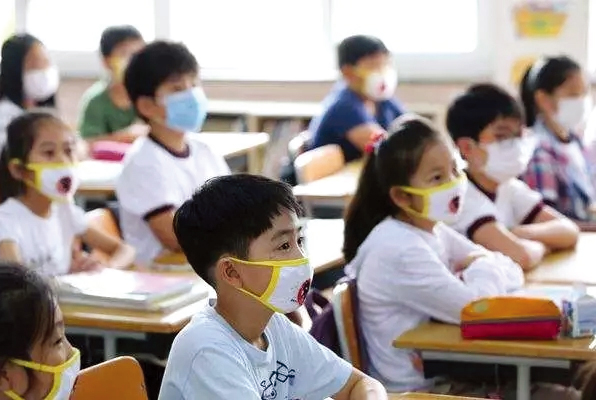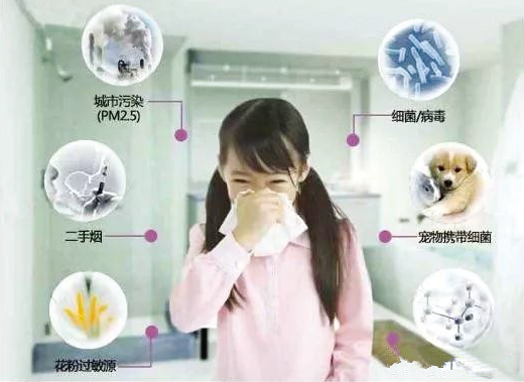Calle Caring for Children's Health -


The healthy growth of children is not only the most worrying issue for parents, but also the point of concern for the whole society. Caring for children's health is not just a slogan, but also a responsibility that requires the joint efforts of the whole society. Because children are as fragile as seedlings in the fields and more vulnerable to injury, children need more careful care to grow healthily. Indoor air pollution in kindergartens, especially smog, PM2.5, and frequent decorations bring formaldehyde and other harmful and toxic substances to the preschool environment, which has become a "killer" that endangers people, especially children's physical and mental health. Children are still in the developmental stage, their immune systems are not perfect, they will be more sensitive to environmental pollution than adults, and they will be more and more affected by environmental pollution. According to relevant media reports, in recent years, there are 4.5 million new cancers in my country every year, including more than 40,000 children with leukemia. According to UNICEF, 300 million children around the world live in the most polluted regions, where air pollution levels are six times or more higher than international standards.
Children spend most of their day indoors in kindergarten or school, and indoor air pollution will cause irreversible damage to children's health and immune systems. The proportion of indoor pollutants is greater than that of air, and it will sink to a height of 1.2 meters from the ground. In kindergarten, children are 3-6 years old and short, and they will undoubtedly inhale a greater amount of harmful gases; and the children's respiratory system, immune system With immature systems and brains, children breathe twice as fast as adults and have narrower airways than adults, which means their air pollution is more harmful to children. Coupled with the high population density of the classrooms, under the condition of air conditioning in summer and winter, the classrooms are almost completely closed, which also makes the classrooms become a breeding ground for bacteria and viruses in the air to harm children. What's more serious is that in sensitive seasons, one person often gets sick and the whole class suffers, which seriously endangers the life, health and safety of children. For preschool children with weak resistance, it is more necessary for us to pay attention to and improve indoor air pollution in kindergartens.

According to the actual measurement, the PM2.5 content in primary and secondary school classrooms in the southern region is three times higher than the current outdoor primary standard of 35 micrograms per cubic meter; the actual measurement of carbon dioxide during primary and secondary school classes found that 60 minutes of classroom time, The concentration can reach 3000ppm, which is twice the current standard of 1500ppm for primary and secondary schools. Studies have shown that when the carbon dioxide concentration is between 600ppm and 4800ppm, the higher the carbon dioxide concentration in the air, the lower the students' homework efficiency and the higher the homework error rate. Under such circumstances, although extreme weather such as "smog" and "sandstorm" has temporarily retreated, indoor pollution sources such as formaldehyde, toluene, and TVOC are eyeing them. Adults are still in such a bad environment, let alone children who are not fully developed, even more critical.
So the campus fresh air is put on the agenda, and the introduction of fresh air systems into the campus has become the general trend! However, how to enter the campus has become another problem that plagues new wind enterprises. The National Building Environment and Children's Health Research found that the incidence of allergic asthma in preschool children has increased rapidly in the past 20 years, and Shanghai has now become the first in the country, with an incidence of childhood asthma close to 10%.
Although you can often see news about the installation of a fresh air system in a kindergarten on various websites, but think about it, how many fresh air enterprises across the country can really enter the campus market? It can be seen that the introduction of the fresh air system into the campus is not a matter of a slogan. It is not a simple campus need. The sale of fresh air enterprises can facilitate the results. There are many issues to consider. For example, when a fresh air enterprise enters a kindergarten, what criteria must be met for a fresh air enterprise to be able to undertake this project. After all, children's breathing health is a major issue. Naturally, excellent enterprises that meet the standards must be selected to reassure children's parents and teachers. The installation of fresh air systems in kindergartens should take into account issues such as high-efficiency filtration, air volume and noise, operating costs, safety and aesthetics.
Kale Fresh Air sincerely hopes that through its continuous efforts, more and more excellent products of fresh air system can enter the campus, so that the children's living environment will be cleaner and healthier.




